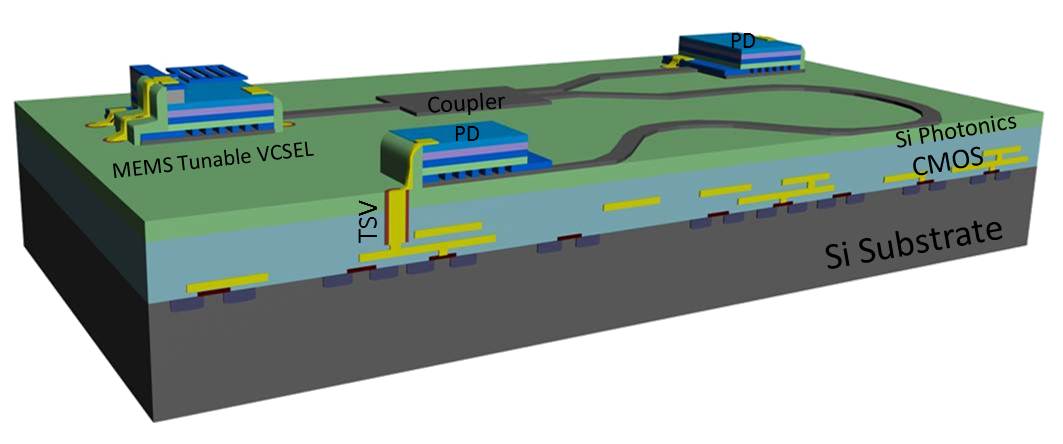Researchers: Sangyoon Han, Niels Quack, Phil Sandborn
Collaborators: Prof. Boser, Prof. Yablonovitch, Prof. Chang-Hasnain, Prof. Shun-Lien Chuang (University of Illinois at Urbana-Champaign)
Funding Agency: Defense Advanced Research Projects Agency (DARPA) E-PHI program under Grant No. HR0011-11-2-0021

Figure 1: Schematic of MEPHI device.
In this project, active III-V photonic components and passive silicon photonic (SiPh) circuits are integrated with CMOS electronic circuits. The modular MEMS-Electronic-Photonic Heterogeneous Integration (MEPHI) platform will make use of the high performance of the individual components and integrate (1) MEMS tunable VCSEL with high-index-contrast grating (HCG) mirrors, (2) photodetectors, (3) Si photonic waveguides, couplers, and interferometers, (4) high-efficiency vertical optical coupler between III-V and Si waveguides, and (5) CMOS circuits for frequency control and temperature compensation. In order to demonstrate the capabilities of the proposed MEPHI platform, a frequency-modulated continuous-wave light detection and ranging (FMCW LIDAR) source will be developed.
The MEPHI process developed in this project aims at a modular approach in fabrication of integrated, combined electronic and photonic circuits. An integrated 3D LIDAR source is developed in order to demonstrate the capabilities of the MEPHI process. Such a compact chip-scale LIDAR source is expected to revolutionize 3D-imaging in mobile applications, such as for autonomous vehicles, 3D cartography, gesture based computing, gaming, etc.
